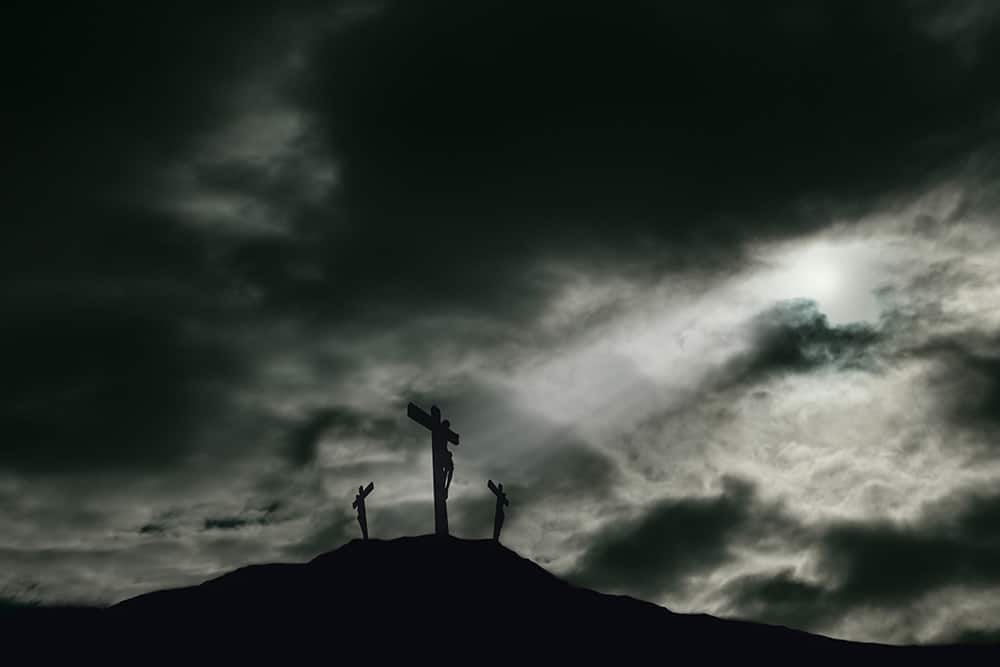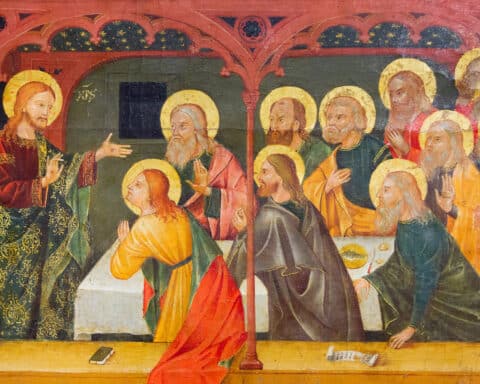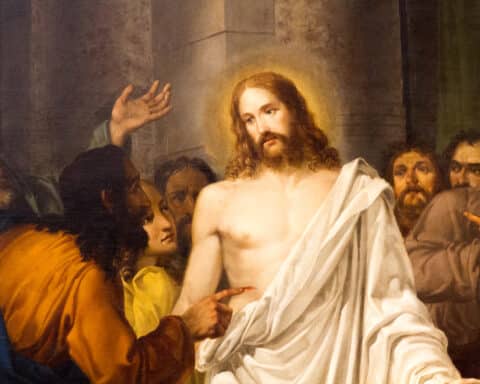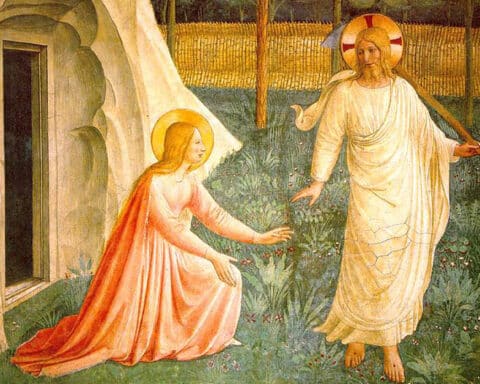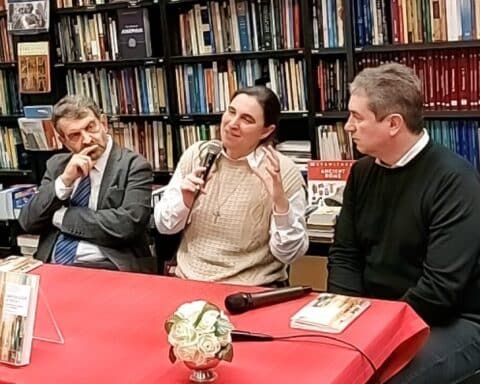This is the 10th in a 12-part series of In Focuses dedicated to exploring some central themes and texts in the Gospel of Matthew.
In Matthew’s Gospel, a series of dramatic signs accompany the death of Jesus. Darkness covers the whole land from a stretch of three hours, from noon until the Lord’s passing (cf. Mt 27:45). The veil of the Temple sanctuary tears from top to bottom (cf. Mt 27:51). An earthquake fractures rocks and opens the tombs of the saints outside of Jerusalem (cf. Mt 27:51-52). The bodies of these dead are restored to life and — after Jesus’ own resurrection — make their way into Jerusalem where they appear to many (cf. Mt 27:53). In the Gospels of Mark and Luke, we hear of darkness and of the temple veil. Only in Matthew, however, are the saints raised from their tombs. What is the meaning of these signs? And how are to understand Matthew’s account of the raising of the dead?
| QUESTIONS TO CONSIDER |
|---|
|
Let’s begin with some surprising words of Jesus. In Chapter 10 of Matthew’s Gospel, the Lord says, “Do not think that I have come to bring peace upon the earth. I have come to bring not peace but the sword” (10:34). Contrary to what we might have hoped, the wolf and the lamb pasturing together is, it seems, some way off (cf. Is 65:25). It is true that Jesus inaugurates a new age: “the kingdom of God is at hand” (Mt 4:17). Even so, the new world is not one set apart cleanly from the old. It is better to speak of the inbreaking of God’s kingdom. If we can say of Jesus on the cross that “God [is] enthroned on Zion” (Ps 9:12), his kingdom is one that even now “suffers violence” (Mt 11:12). As the Jewish people knew from the Scriptures, the time of the Messiah would be marked by tribulation. According to the Mishnah, a written collection of the Jewish oral traditions, “In the footsteps of the messiah … the wisdom of the learned will rot, fearers of sin will be despised, and the truth will be lacking; youths will put old men to shame” (Mishnah Sota 9:15).
After the promise to bring not peace but a sword, Jesus goes on to say that he has “come to set a man ‘against his father, a daughter against her mother …” (Mt 10:35). This is a citation of Micah, a prophecy in which we hear of the confusion that attends the time before God vindicates his own:
“For the son belittles his father, the daughter rises up against her mother, The daughter-in-law against her mother-in-law, and your enemies are members of your household. But as for me, I will look to the Lord, I will wait for God my savior; my God will hear me! Do not rejoice over me, my enemy! Though I have fallen, I will arise; though I sit in darkness, the Lord is my light” (Mic 7:6-8).
Confusion is followed by clarity. Those who suffer are vindicated. “When my enemy sees this,” Micah goes on to say, “shame shall cover her: She who said to me, ‘Where is the Lord, your God?’ My eyes shall see her downfall” (Mic 7:10). The tribulation that the Messiah undergoes will be followed by dramatic reversal. As the Lord says of his own passion, death and resurrection (about which we read last month), “Amen, I say to you, there are some standing here who will not taste death until they see the Son of Man coming in his kingdom” (Mt 16:28). The sword has the first word but not the last. The one who brings it is, when all is said and done, the “prince of peace” (Is 9:5).
The first sign — darkness
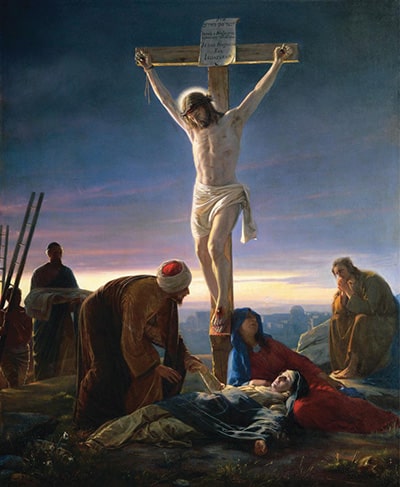
It is with this dramatic reversal in mind that we can begin to understand the three signs that accompany the crucifixion. The first of these is the darkness that, “From noon onward … came over the whole land until three in the afternoon” (Mt 27:45). The reference here is to a passage from the book of Amos where God announces punishment for “my people Israel” (Am 8:2). They “buy the destitute for silver, and the poor for a pair of sandals” (Am 8:6). The day of reckoning approaches, says the prophet: “On that day — oracle of the Lord God — I will make the sun set at midday and in broad daylight cover the land with darkness. I will turn your feasts into mourning and all your songs into dirges. I will cover the loins of all with sackcloth and make every head bald. I will make it like the time of mourning for an only child” (Am 8:9-10).
The darkness that accompanies the crucifixion invites us to understand the death of Jesus and the moment in which the one who was made sin for our sake (cf. 2 Cor 5:21) bears in his own person the punishment due to “my people Israel.”
So also, however, is this the day of vindication. Amos’ announcement of punishment leads to a prophecy of restoration: “On that day I will raise up the fallen hut of David; I will wall up its breaches, raise up its ruins, and rebuild it as in the days of old” (Am 9:11). Jesus, “the son of David” (Mt 1:1), is both the recipient of the punishment due to Israel and the one restored according to God’s promise. This is the moment of messianic tribulation and victory. Of this, the miraculous darkness is a witness.
The second sign — Temple veil
The second sign is the rending of the Temple veil. At the moment of Jesus’ death, “behold, the veil of the sanctuary was torn in two from top to bottom” (Mt 27:51). It is possible that the reference here is the small veil that separated the Holy of Holies from the rest of the Temple. Its rending would symbolize the movement of God’s presence out of the confines of the Temple. What belonged only to Israel the whole world now enjoys. This is an attractive possibility, but it is more likely that the torn veil is the one which hung at the entrance to the Temple building, not in the doorway to its inner room, the Holy of Holies. This outer veil was some 80 feet high and, according to the Jewish historian Josephus, embroidered with an image of the starry heavens. Its rending would parallel the dramatic public nature of the other signs and possess a similar symbolic value.
The tearing asunder of the heavens is something associated with moments of cosmic judgement, much as we’ve already seen the texts from Micah and Amos. Though Matthew alludes to no text in this instance, we might wonder if something like Isaiah informs his understanding: “All the host of heaven shall rot; the heavens shall be rolled up like a scroll. All their host shall wither away, as the leaf wilts on the vine, or as the fig withers on the tree” (Is 34:4, cf. Mt 21:18-22). The death of Christ is the moment of cosmic tribulation, the passing away of the old world and the inbreaking of the new. Of this, the torn veil is a witness.
The third sign — tombs open
The same newness is captured in the third sign: “The earth quaked, rocks were split, tombs were opened, and the bodies of many saints who had fallen asleep were raised. And coming forth from their tombs after his resurrection, they entered the holy city and appeared to many” (Mt 27:51-52). This moment of resurrection in Matthew calls to mind Ezekiel’s valley of dry bones (cf. Ez 37:1-14). For the great prophet of the exile, this vision announced first the restoration of “the whole of Israel” (Ez 37:11). Both the northern tribes — dispersed for nearly a century and a half by Ezekiel’s day — and the recently displaced tribes of the south would be knit together, sinew on bone, when God raised them from the earth. If in the first instance this meant a return from exile, its eventual meaning in Scripture is that of a return from death, namely, the resurrection of the dead. “I am going to open your graves; I will make you come up out of your graves, my people, and bring you back to the land of Israel” (Ez 37:12). The similarity in content makes the connection with Matthew clear.
So also is there a connection with the prophet Zechariah. (I know, there are quite a few texts. So much of Matthew is woven with strands from the Old Testament. As the Lord says, “every scribe who has been instructed in the kingdom of heaven is like the head of a household who brings from his storeroom both the new and the old” [Mt 13:52].) In Zechariah also we hear of the coming day of judgment. On that day, “The Mount of Olives will be split in two,” and then “the Lord, my God, will come, and all his holy ones with him” (Zec 14:4, 5). Again, the parallel to Matthew account of an earthquake and a resurrection are clear.
Messengers of salvation
Even so, a more helpful recent suggestion points us in the direction of Isaiah. A latter portion of that book speaks of Israel’s restoration, both from their immediate captivity in Babylon and in a more far reaching way from all that restrains them from the fullness of what God wishes to give. The description of John the Baptist as “A voice of one crying out in the desert, ‘Prepare the way of the Lord, make straight his paths'” (Mt 3:3; cf. Is 40:3) is a fine example. It speaks of Israel’s return home to the Promised Land and also, in the mouth of the Baptist, of the final restoration inaugurated by Jesus. More than just one source among many, “there is much to suggest that the prophecies of Isaiah, especially chapters 40-55, were,” as Richard Bauckham writes, “the most important part of the Hebrew Scriptures for the early Christians’ understanding of the place of Jesus and themselves in the divine purpose for Israel and the world.”
| KEY LESSONS |
|---|
|
In Chapter 52, the prophet calls to Jerusalem “awake, awake!” (Is 52:1). He speaks of the holy city’s comfort and redemption (cf. Is 52:9, 3). All of this is bound up with the Lord’s return (Is 52:8) and the knowledge that it is he who dwells in their midst: “My people shall know my name on that day, that it is I who speak: Here I am!” (Is 52:6). These are the same emphases we hear also in Matthew. A particularly strong parallel appears in the following verse. Its interpretation is summarized beautifully by Timothy Wardle:
“[Isaiah] 52:7 proclaims, ‘How beautiful upon the mountains are the feet of the messenger who announces peace, who brings good news, who announces salvation, who says to Zion, “Your God reigns.'” Thus, in Isaiah, a mention of Jerusalem and resurrection leads into a proclamation of the announcement of peace, salvation, and the reign of God. This movement from Jerusalem and resurrection to the proclamation of salvation and God’s reign evocatively suggests that Matthew’s narrative in 27:51-53 is really an intertextual narrative: the evangelist describes the mission of the Isaianic messenger in the persons of the risen [saints] who now appear to many inhabitants of the city and present evidence of Jesus’ resurrection, or, in the language of Isaiah, they announce peace, good news, and salvation.”
As in the first two signs, there is an announcement of judgement and restoration. The earthquake is a witness to the first of these (cf. Zec 14:4). The raising of the dead (cf. Zec 14:5; Ez 37:12) and their appearance in Jerusalem (cf. Is 52:7) is a witness to the second.
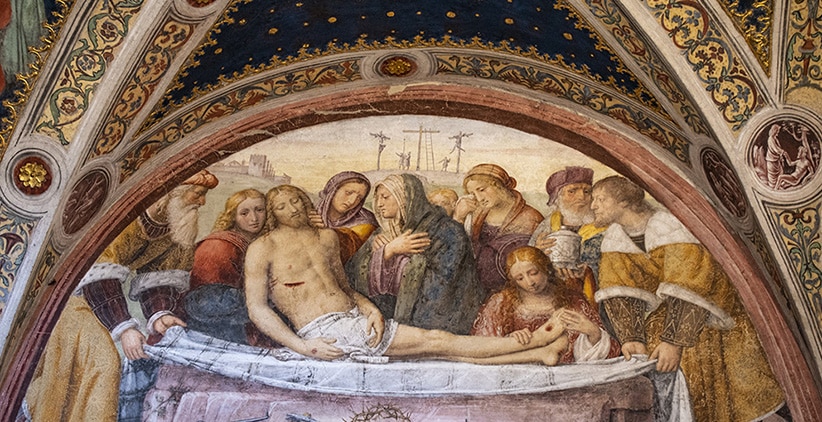
The whole of this complex, as W.D. Davies and D.C. Allison write in their “International Critical Commentary” on Matthew, “makes plain the eschatological meaning of the crucifixion.” What might otherwise have passed as the death of one man is shown to be the centerpoint of history in which God acts with the fullness of justice and mercy. It makes plain to us what was plain also to those who witnessed these signs. “The centurion and the men with him who were keeping watch over Jesus feared greatly when they saw the earthquake and all that was happening, and they said, ‘Truly, this was the Son of God!'” (Mt 27:54). As the dead appeared to the faithful in Jerusalem, so Matthew’s account of them appears to us and with it the announcement of peace, good news, and salvation. When we see the earthquake and all that follows, we too can say “truly this was the Son of God!”
Anthony Pagliarini is an assistant teaching professor and director of undergraduate studies in the Department of Theology at the University of Notre Dame.
| COMING NEXT MONTH |
|---|
|
“Peter and the Church” — “And so I say to you, you are Peter, and upon this rock I will build my church” (Mt 16:18). This passage concerning Peter’s primacy and community discipline offers an insight into Matthew’s and our Lord’s understanding of the Church. What does the passage mean? What else in Matthew fills out our understanding of Jesus wishes for the Church?
|

